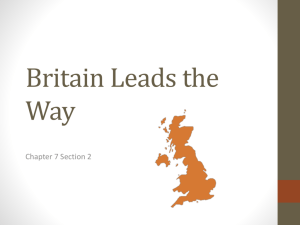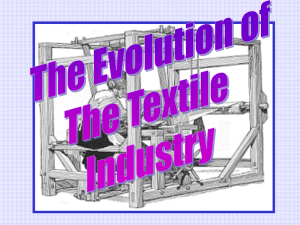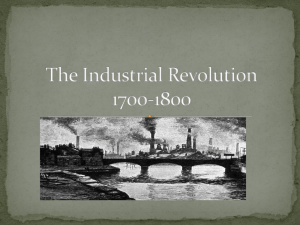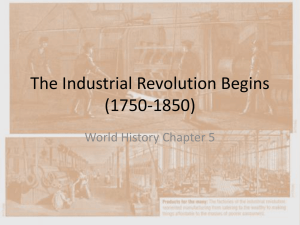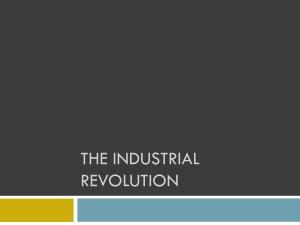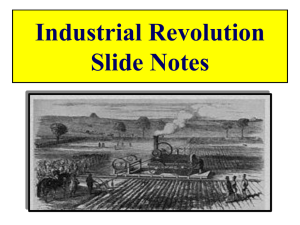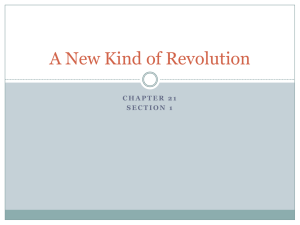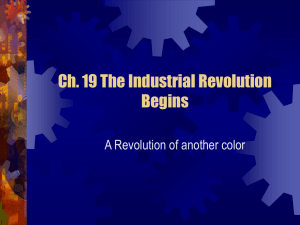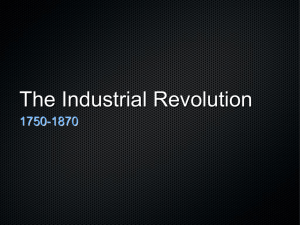AP EURO - LECTURE OUTLINE 20-1 pp_ 552
advertisement
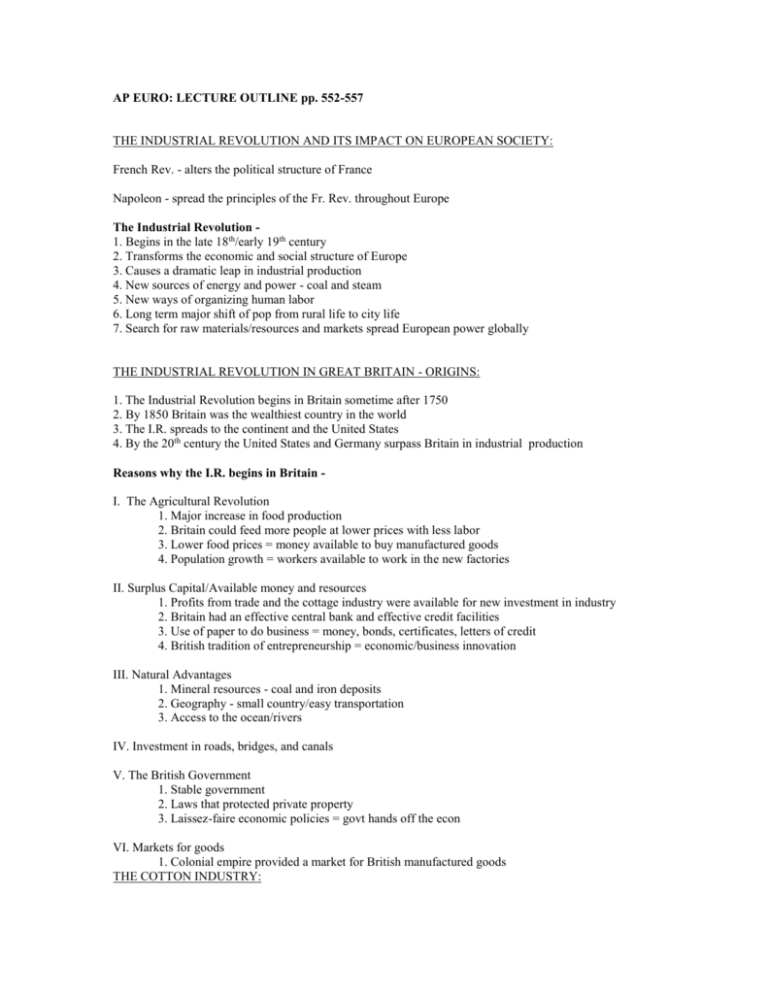
AP EURO: LECTURE OUTLINE pp. 552-557 THE INDUSTRIAL REVOLUTION AND ITS IMPACT ON EUROPEAN SOCIETY: French Rev. - alters the political structure of France Napoleon - spread the principles of the Fr. Rev. throughout Europe The Industrial Revolution 1. Begins in the late 18th/early 19th century 2. Transforms the economic and social structure of Europe 3. Causes a dramatic leap in industrial production 4. New sources of energy and power - coal and steam 5. New ways of organizing human labor 6. Long term major shift of pop from rural life to city life 7. Search for raw materials/resources and markets spread European power globally THE INDUSTRIAL REVOLUTION IN GREAT BRITAIN - ORIGINS: 1. The Industrial Revolution begins in Britain sometime after 1750 2. By 1850 Britain was the wealthiest country in the world 3. The I.R. spreads to the continent and the United States 4. By the 20th century the United States and Germany surpass Britain in industrial production Reasons why the I.R. begins in Britain I. The Agricultural Revolution 1. Major increase in food production 2. Britain could feed more people at lower prices with less labor 3. Lower food prices = money available to buy manufactured goods 4. Population growth = workers available to work in the new factories II. Surplus Capital/Available money and resources 1. Profits from trade and the cottage industry were available for new investment in industry 2. Britain had an effective central bank and effective credit facilities 3. Use of paper to do business = money, bonds, certificates, letters of credit 4. British tradition of entrepreneurship = economic/business innovation III. Natural Advantages 1. Mineral resources - coal and iron deposits 2. Geography - small country/easy transportation 3. Access to the ocean/rivers IV. Investment in roads, bridges, and canals V. The British Government 1. Stable government 2. Laws that protected private property 3. Laissez-faire economic policies = govt hands off the econ VI. Markets for goods 1. Colonial empire provided a market for British manufactured goods THE COTTON INDUSTRY: Britain was the leader in the manufacture of cotton textiles using the “domestic” system/cottage industry The flying shuttle = faster way to weave on a loom Weavers could work faster than spinners - this meant a shortage of yarn Spinning Jenny = faster way of spinning developed by James Hargreaves in 1768 The Water Frame = a water frame spinning machine developed by Richard Arkwright Crompton’s Mule = combined the water frame and the spinning jenny - greater output of yarn Edmund Cartwright’s Power Loom = mechanized method of weaving yarn All of the above inventions and developments lead to the creation of the first factories 1. Bring all the machines together in one building 2. Locate the factories on river/streams to provide water power 3. Bring workers all together in one building 4. Workers move closer to the factories = growth and expansion of towns Demand for cottons goods pushed people to create new and more complicated technology to produce it THE STEAM ENGINE: Steam engines first used to pump water out of coal mines Coal was used to replace depleted wood as a source of energy Coal was used to smelt iron ore to make pig iron More coal mining meant deeper mines which meant digging below the water line Digging below the water table meant you needed a way to pump out water Mechanical pumps were used to pump out water Steam driven pumps were dev to solve this problem Thomas Newcomen - invented the first steam pumps/but it was inefficient James Watt - made improvements on the steam engine in the 1760’s/created the first efficient steam engines 1782 Watt developed a steam engine with a rotary engine = turn shafts and drive machinery By 1850 - 7/8’s of power for cotton manufacturing was from steam Steam power was applied to spinning and weaving = cotton mills Factories no longer had to be located near rivers British imports of raw cotton = 1760 - 2.5 million pounds 1787 - 22 million pounds 1840 - 366 million pounds Much of the raw cotton came from the American South = plantation ag. + slave labor Price on yarn drops to 1/20th of what it had been = cheaper cloth = cheaper clothing Greater steam power = greater demand for coal = development of the iron industry THE IRON INDUSRTY: New method to produce iron = iron ore + coke (byproduct of burning coal) = cast iron Henry Cort = developed a new system called puddling for producing iron 1740 - 17,000 tons of iron 1780’s - 70 tons of iron 1840’s - 2 million tons 1852 - almost 3 million tons Demand for more machines = demand for more iron A REVOLUTION IN TRANSPORTATION: Turnpike trusts Canals Railroads George Stephenson’s Rocket 1. First modern railway line 2. Liverpool to Manchester 3. Traveled 16 mph 1840 - 2,000 miles of railways in Britain 1860 - 6,000 miles of railways in Britain Effects of the railroads 1. Growth of the coal and iron industries 2. Supremacy in civil and mechanical engineering 3. New joint-stock companies - new middle class investors 4. Increased employment 5. Lower prices = increased sales = increased production = increased employment = increased sales Greater economic growth meant greater investment capital which meant greater growth


